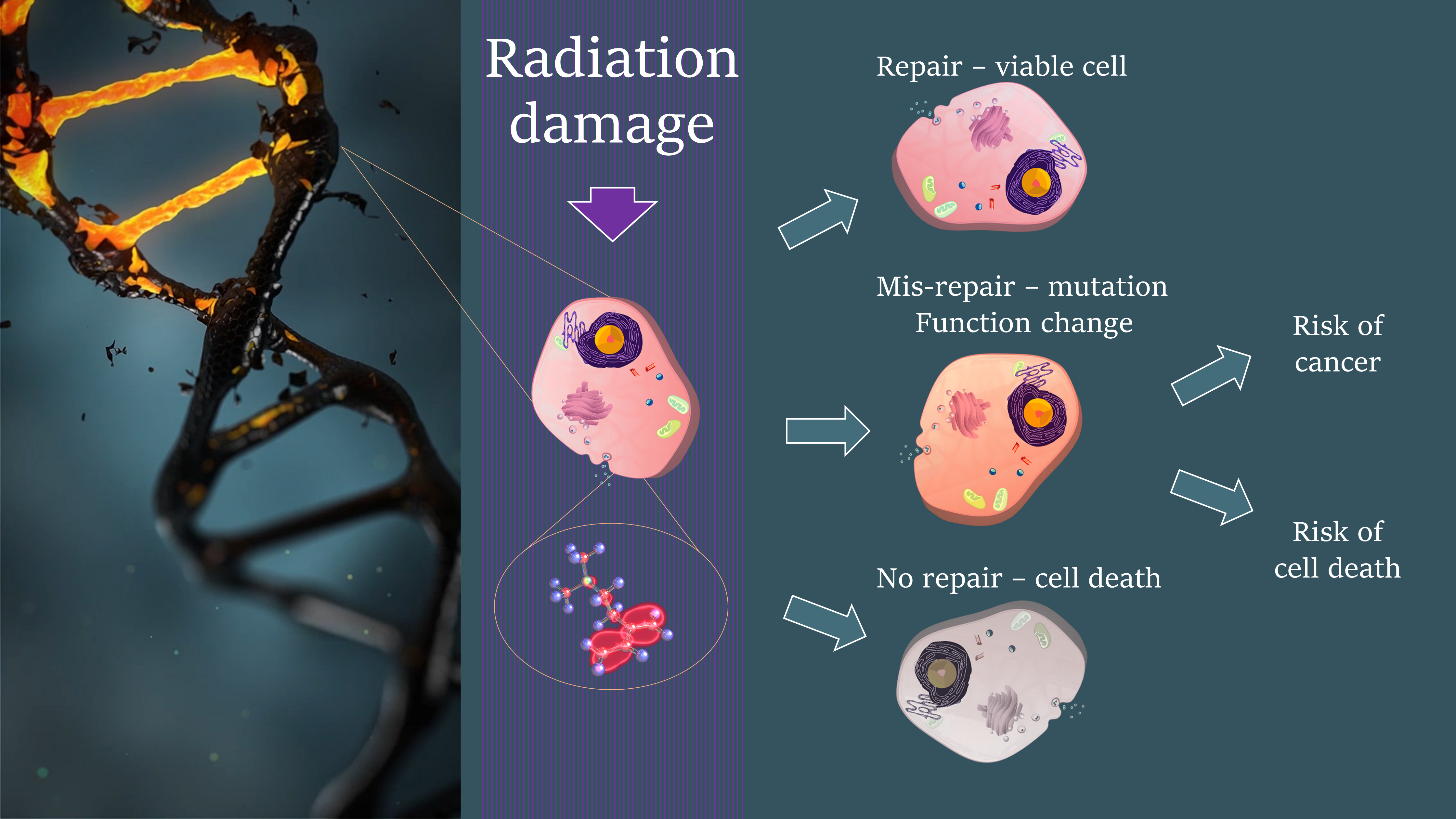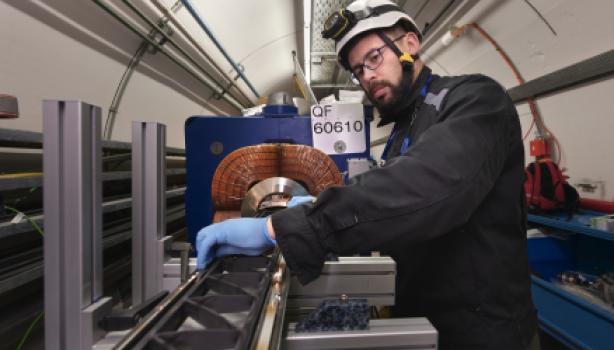Header image (Figure 1): Technological breakthroughs in light generation and selected applications enabled by qualitatively new light source capabilities (for image sources see below*).
Methods for generating light pulses that are much shorter and brighter than currently available has been set out in a new paper by an international collaboration of accelerator scientists [1]. Figure 1 shows how throughout history the breakthroughs in light generation have revolutionized our ability to study smaller and smaller objects, from microcrystals to viruses and even to individual atoms. The discovery of X-rays at the end of the 19th century enabled diffraction imaging at the atomic scale while, with the invention of synchrotrons in the 1940’s, the photon flux became sufficient to capture the diffraction patterns of nanocrystals in the 1970’s. The time resolution at the atomic scale from these X-ray sources was, however, severely lacking. Meanwhile, the progress in conventional laser technology, born in the 1960’s, together with the invention of chirped pulse amplification (CPA) developed in the 1980’s, now enables lasers to generate sufficient intensity to drive High-Harmonic Generation (HHG) in gases which can output attosecond duration pulses of light. However, while the femtosecond barrier was broken by laser technology and HHG, the spatial and temporal resolution potentially offered by accelerator-based X-ray sources, remains beyond their reach.
The Free-Electron Laser (FEL) is a cutting-edge, accelerator-based instrument that has the potential to provide simultaneous access to the spatial and temporal resolution of the atomic world. In a FEL, ultra-short electron bunches from an accelerator are passed through a long undulator magnet to generate coherent light. Recently, scientists from SLAC demonstrated the first generation of attosecond hard X-ray pulses, using the Linac Coherent Light Source. Now, as described in the review article by Alan Mak et al. [1], researchers are proposing developments that will make the FEL a fully coherent, single-cycle (attosecond) X-ray laser. The new concepts build upon a strong nexus between linear accelerators, FELs and quantum lasers, to produce extreme attosecond pulses with controllable waveforms.

Figure 2: The left plot in the panel (a) shows the minimum pulse duration attained over time with various demonstrated (blue) and potential (red) technologies while the right plot of the same panel depicts typical temporal waveforms. For simplicity, the period of the carrier is taken to be the same. The panel (b) presents the state-of-the-art of the pulse energy achievable by short-pulse light sources. The HHG and novel undulator concepts deliver few-cycle light pulses whereas the FEL sources shown in the figure deliver light pulses of significantly more than a few cycles. Adapted from [1].
The need for the development of a new attosecond technology is motivated by the diminishing progress in the generation of short pulses with conventional lasers, as depicted in Fig. 2a. The combination of CPA and HHG in gas allowed laser technology to break the femtosecond barrier in the 2000’s, but the initial rapid progress in pulse duration reduction has since levelled off. Another issue with conventional lasers, is that the pulse energies, critical in attosecond science, decrease rapidly as the pulses get shorter as shown in Fig. 2b. On the other hand, the attosecond regime is shown in simulations to be accessible via methods based on coherent radiation from undulators [1]. Moreover, it is seen that the pulse energy of undulator-based attosecond sources may exceed the pulse energy of the equivalent conventional laser sources by three orders of magnitude for the same pulse duration. The sub 50-attosecond, high-energy light pulse generation predicted from undulator-based technology, can therefore open up and provide access to the uncharted territory of the fastest time scales in atoms.
Figure 3: Sudden radiation damage upon ionization in bio-relevant molecules and in DNA, in particular, is related to the electron-hole dynamics occurring on the sub-femtosecond scale.
An important scientific application of such intense attosecond pulses is the study of electron flow from one region of a molecule to another, so called charge migration, which is a fundamental process in biology. As illustrated in Fig. 3, intense radiation can induce charge migration that leads to DNA and cell damage. Detailed investigations of the mechanism of charge migration are essential for understanding the processes that result in biological malfunction. Such knowledge can be obtained using the high temporal and spatial resolution offered by the proposed developments in undulator attosecond technology.
The authors of the review article have recently expanded their collaboration to form the LUSIA consortium (Towards Attosecond SIngle-cycle Undulator Light). The objectives of the consortium are to shift the paradigm of FEL pulses from long multi-cycle output, towards tailored single-cycle pulses. They aim to conduct proof-of-principle experiments leading to the development of a new enabling technology for attosecond science.
References
- [1] Alan Mak et al “Attosecond single-cycle undulator light: a review.” Reports on Progress in Physics 82 (2019) 025901
* Copyright of images used in Figure 1 from left to right.
Top row:
1. Wikipedia article “Laser,” credits to David Monniaux - Kastler-Brossel Laboratory at Paris VI: Pierre et Marie Curie;
2. Wikipedia article “Synchrotron,” credits to EPSIM 3D/JF Santarelli, Synchrotron Soleill
3. The Eurpean XFEL: https://www.xfel.eu/facility/overview/index_eng.html
4. Own artistic work
5. Own artistic work
Bottom row:
1. Google Commons.
2. Janos Hajdu “Diffraction before destruction,” talk at the Nobel Symposium on Free Electron Laser Research, 2015.
3. https://lcls.slac.stanford.edu/multimedia, “LCLS: The Linac Coherent Light Source at SLAC.”
4. N. Saito et al. "Attosecond streaking measurement of extreme ultraviolet pulses using a long-wavelength electric field." Scientific reports 6 (2016): 35594. Licensed under a Creative Commons Attribution 4.0 International License.
5. Wikipedia Commons: category “atomic orbitals.”



